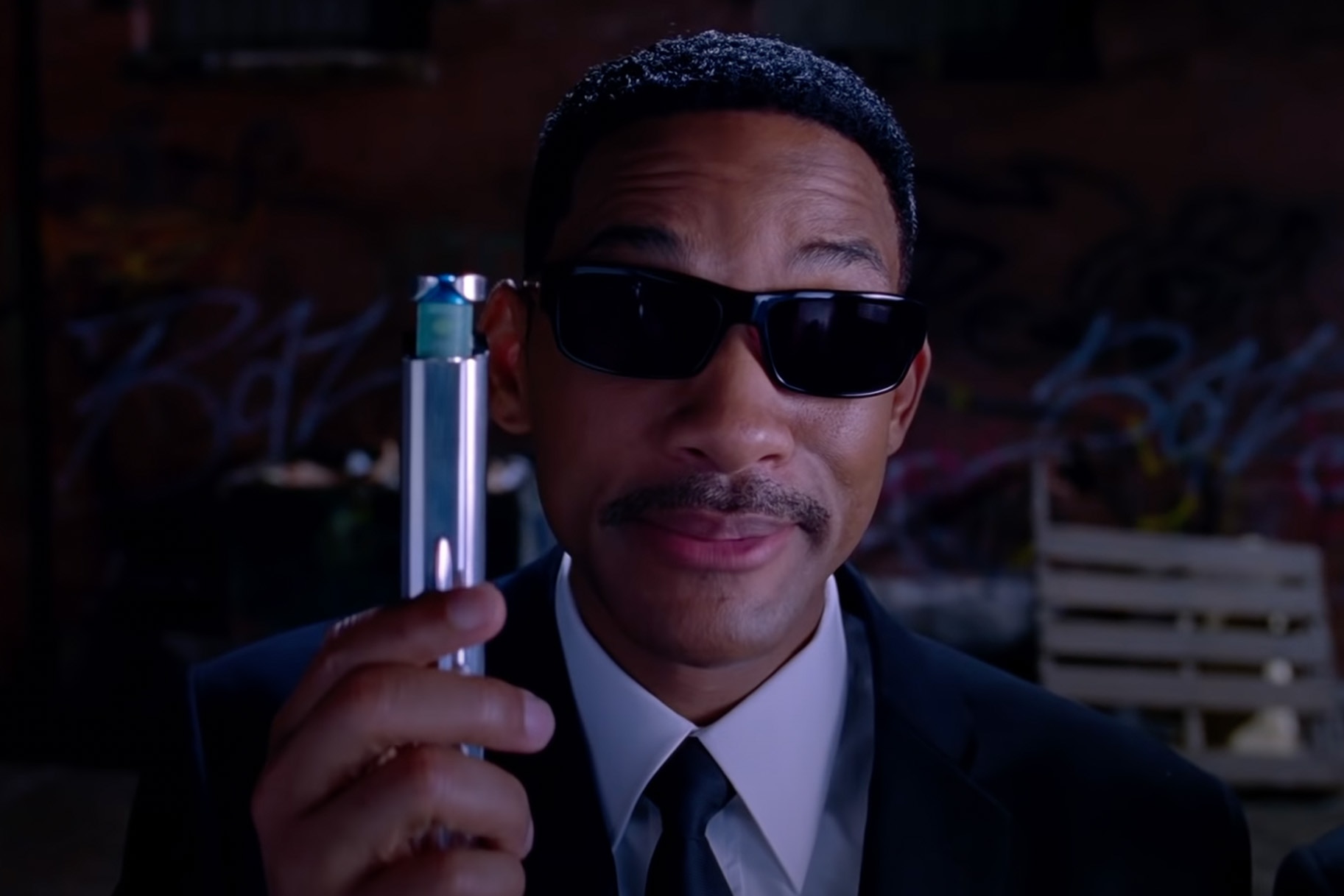Could Men in Black's Neuralyzers Actually Exist?
The prototype (for mice) already exists!

In 1997, screenwriter Ed Solomon and director Barry Sonnenfeld adapted Lowell Cunningham’s comic book The Men in Black into a similarly titled feature film (streaming now on Peacock). It stars Tommy Lee Jones and Will Smith as two members of the world’s most secret unofficial agency, the Men in Black.
They are, as you may or may not know, the first, last, and only line of defense against the worst scum of the universe. In their constant fight to keep the populace safe and ignorant of alien visitation, the Men in Black employ a number of fun, high-tech tools. There’s the Noisy Cricket, an embarrassingly small and surprisingly powerful gun; the Spectral Trail Scanner, used to find extraterrestrial trails out in the field; and the neuralyzer, a handheld device capable of erasing the memories of anyone who sees its powerful flash.
According to the official lore, the neuralyzer was first invented in 1962 and the first prototype was the size of a cement truck. It didn’t work very well and it wasn’t exactly covert, but MiB scientists kept at it. They isolated the crucial mechanism, a mixture of visible and invisible light waves delivered in a variable burst. The light courses through the optic nerve and overloads the brain, which shuts down to protect itself. Any recent memories are lost in the wash.
In the following moments, the neuralized are susceptible to suggestion, giving the MiB a window in which to replace the actual memory with a new version of events. In the real world, directed memory alteration remains largely in the realm of fiction, but scientists have made staggering progress in mice, using similarly light-based methods.
For More on Memories:
Human Forgetfulness is a Feature, Not a Bug
Your Brain on Fear: This is Why You Block Scary Memories
Scientists Recover 'Lost Memories in Mice with Asthma Medication
Using Light to Modify the Memories of Mice: The Science Behind Men in Black's Neuralyzers
Just before Christmas 2012, researchers from MIT placed a mouse in a box with a black, plastic floor, and the mouse froze in fear. It remembered receiving an electric shock the last time it was in the same box and it was experiencing a predictable trauma response with one major exception. It was responding to a remembered event that never happened.
Here’s how ordinary memory formation usually works: You experience something like burning your hand on a hot stove (or getting a shock from a black box) and cells in your brain encode that memory. When presented with a hot stove or a black box in the future, that memory is activated and you experience a fear response at the prospect of repeated injury. The question researchers wanted to answer was whether they could identify and hijack that machinery to manipulate specific memories.
In the lab, researchers injected a biochemical cocktail containing a gene for making light-sensitive proteins into the brains of mice. They targeted the dentate gyrus, a region of the brain responsible for episodic memory and exploration of new environments. Then they surgically implanted fiber optic filaments connecting the dentate gyrus to an external laser.
When the modified mice were exposed to a stimulus, like an electrified floor, they created a new memory in the dentate gyrus, the involved cells produced light-sensitive proteins, and researchers were able to identify the group of neurons encoding that memory. When researchers then stimulated those cells with laser light, the mouse froze in fear as if reliving the experience.
In another experiment, the one from December 2012, a mouse was placed in a black box but not shocked. Later, it was placed in a different box and the memory of the black box was reactivated right at the same time the mouse received a shock from the new box. When the mouse was later returned to the safe, black box, it froze in fear from the false memory. Scientists had succeeded in merging the previously pleasant memory of the black box with the traumatic electric shock of the second box.
In later studies, researchers expanded the work to include other forms of memory manipulation with more pleasant results. In one experiment, researchers replaced the actual experience of an electric shock with a more pleasant, but false, memory. Researchers have even recovered mice from a severe depression by reactivating positive memories from their pasts.
Collectively, these experiments seem to have confirmed that memory manipulation is, indeed, possible. It’s just a matter of converting those technologies from mouse brains to humans. That’s no small chore, but there’s no reason it shouldn’t be possible. The good news is that the process is complex enough that you’d need to be in on it. Our futures are likely to be a little less Men in Black and a little more Eternal Sunshine.
Watch Men in Black, streaming now on Peacock!




























